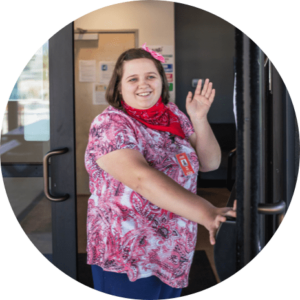Affordable housing for people with I/DD is in low supply. Learn what ALSO is doing to make a difference.
Affordable housing for people with I/DD is in low supply. Learn what ALSO is doing to make a difference.
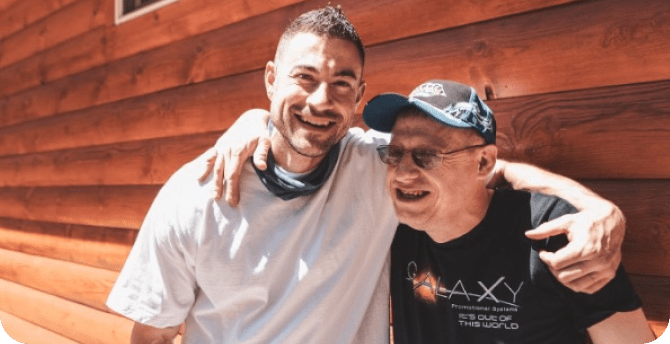
Let’s say a TV reporter stopped you on the street, at a concert, or at the local coffee shop, and asked the following question:
“Are you in favor of including people with disabilities as equal participants in community life?”
Being the good person that you are, you’d likely say,
“Yes! Absolutely!”
Then the reporter asks you a follow-up question that makes you think more deeply:
“And how exactly would you do this?…How would you take part in achieving this goal?”
The TV reporter is talking about a concept called disability inclusion. The Centers for Disease Control and Prevention (CDC) describes disability inclusion [1] as:
“Understanding the way people function and how they participate in society, and making sure that everybody has the same opportunities to participate in every aspect of life to the best of their abilities and desires.” [paragraph 9]
Most of us are now aware of certain examples of disability inclusion, for example, the presence of wheelchair ramps for people with physical disabilities. Similarly, we are accustomed to crossing the street and hearing voice-prompts that assist those living with visual impairments or disabilities. Of course, these are very important steps forward in achieving equal access for people of all levels of ability. But let’s take disability inclusion to the next level, or rather to its ideal level.
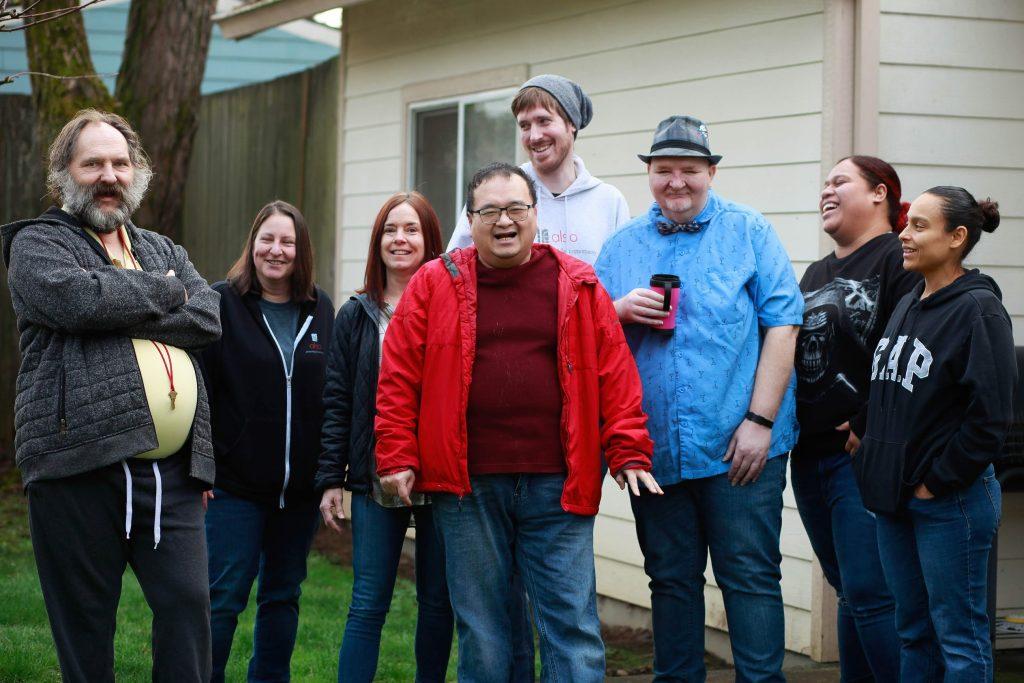
Let’s embrace the actual spirit of the Americans with Disabilities Act by clarifying first that the rights of persons with disabilities are human rights.
The United Nations Convention on the Rights of Persons with Disabilities wholeheartedly agrees and promotes equal opportunity and full integration of people with disabilities into societies [2]. Inclusive communities enjoy many benefits.
There is widespread agreement among health care professionals, disability advocates and self-advocates, and policymakers on how those living with disabilities benefit from a more inclusive environment. Here are some of those benefits:
LEARN MORE: The Benefits of Hiring People with Disabilities
It’s a 2-way street! Here are just a few of the ways in which entire communities benefit from being more inclusive of individuals with disabilities.
LEARN MORE: The Positive Impact of People with Disabilities on Communities
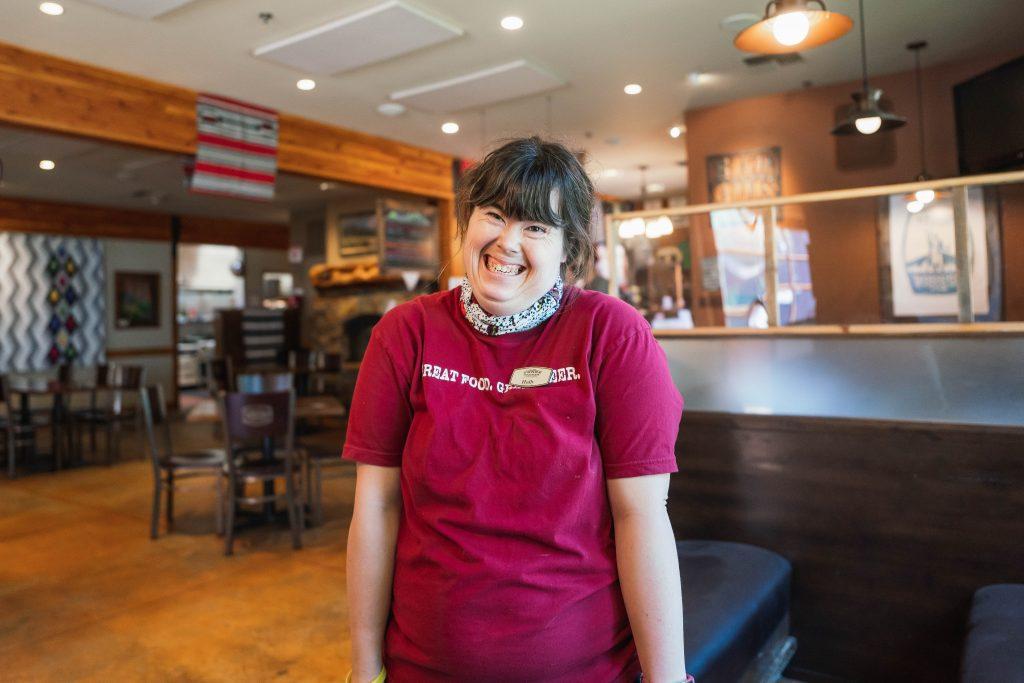
For over 25 years, ALSO team members, leads, managers, and direct support professionals have successfully assisted people with intellectual and developmental disabilities in achieving their goals and dreams of full community inclusion.
At ALSO, we recognize all people with disabilities as participating members of a vibrant, diverse society. They have both the human rights and responsibilities to participate in their chosen communities on an equal basis alongside their peers without disabilities—making the community a better place for all of us.
Therefore, we are proud to share these 7 tips on how to be more inclusive of all people with disabilities in our communities.
A great way to learn something new is to simply ask. With 1 in 4 adults living [3] with some kind of disability, you are bound to know someone!
Even the same types of disabilities will affect each individual in different ways [4]. For example, your neighbor with an intellectual disability (ID) might have difficulty remembering to bring in the mail daily. But your co-worker with ID may have a tough time with tasks related to math.
So, as you sit down with your neighbor over a cup of coffee or while watching a football game, just ask how you might be able to be more supportive or helpful. Don’t be surprised if they simply say, “I want to be your friend.”
When it comes to identity-first and person-first language, it’s important to ask the individual with a disability what language they prefer instead of making assumptions. In other words, it is better to center language around the person rather than using cookie cutter rules for everyone.
Check out examples of inclusive language [5] from Colorado State University to learn more about this topic and “unhandicap your language.”
LEARN MORE: The Importance of Person-Centered Language
There are countless ways to learn about disabilities and how they affect our neighbors, family members, and co-workers. A variety of credible online resources are available, such as the following:
Remember that by starting conversations (Tip #1), you can learn a lot about various forms of disabilities and how to meet the specific needs of your fellow community members.
Let’s say you’re at a concert with one of your favorite bands. Take some time to make observations about accessibility. Are the aisles for the seating wide enough to allow those with wheelchairs or walkers to pass? What about the elevators? Are they in good working order?
What about at your workplace? For example, does the break room have countertops that accommodate those who use wheelchairs? How is the microwave oven placed? Is it by chance out of reach for anyone? Look at your work area. Are there any quiet places that would allow your co-workers with Autism or other neurodivergent conditions to complete their work tasks without being distracted by the photocopy machine or bright lights?
LEARN MORE: Tips for Reasonable Accommodation Requests
Understanding Invisible Disabilities in the Workplace [9]
It’s amazing to learn, on a global level, the growing support of ensuring effective participation of people with disabilities in all aspects of society. The Americans with Disabilities Act of 1990 has had a major influence on other nations on changing attitudes as well as policy. It is now generally accepted that disability inclusion not only improves the quality of life of persons with disabilities, but all citizens, regardless of ability level. [10]
Sara Minkara, the U.S. special advisor on international disability rights, states that we need to change the view of disability in society. Instead of disability being stigmatized, we need to look at disability as a beautiful part of our identity and of society. In sum, disability is an asset. [11]
Check out these examples of how disability inclusion is being embraced by others.
Often, all it takes is the person who is looking at you in the mirror to make a difference. If you set the example, others will appreciatively follow. No matter who you are, or what your occupation, here’s what you can do:
LEARN MORE: Making the Holidays More Accessible for People with Disabilities.
LEARN MORE: Benefits of Diversity and Inclusion in the Workplace
Sometimes it takes a bit of convincing to help others understand the value of full community inclusion.
Among the concerns are that inclusive practices incur additional costs for employers, business owners, and taxpayers. This is largely untrue, as evidenced by the many economic benefits of providing equal opportunities in education [15], the workplace [16], and independent living.
Is it sometimes difficult to be a disability advocate? Well, maybe sometimes. But there are huge advantages. After all, it’s likely you know someone who you would love to advocate for. Furthermore, we are all getting older, and will likely be faced with disability at some point in our lives. So let’s work together for a more compassionate, kind, and inclusive society.
LEARN MORE: Become a Disability A.L.L.Y. [17]
LEARN MORE: 8 Ways to Advocate for People with Disabilities
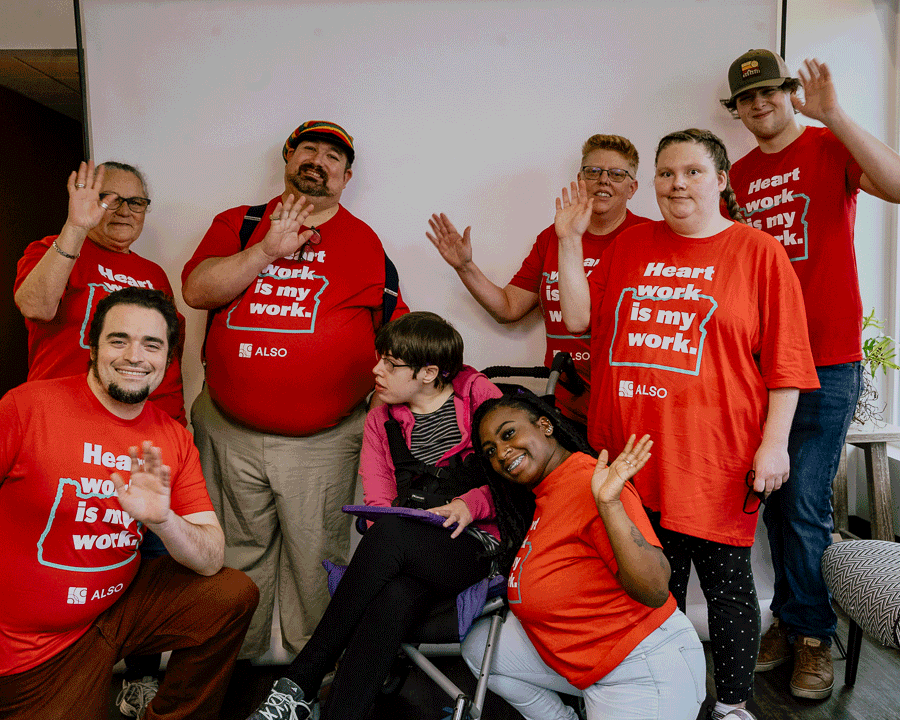
We at ALSO started advocating for full community inclusion of people with developmental and intellectual disabilities since the 1990’s. So, we could easily say we are well ahead of the curve when it comes to how to facilitate diversity, equity, and disability inclusion in all aspects of everyday life. This is why we call ourselves Advocates for Life Skills and Opportunity.
So, join us in helping achieve our mission! No matter how you support people with disabilities (as a provider, family member, employer, friend, or teacher), we are here as collaborative partners in creating a happy, healthy, and productive community. To make an impact, learn more today.
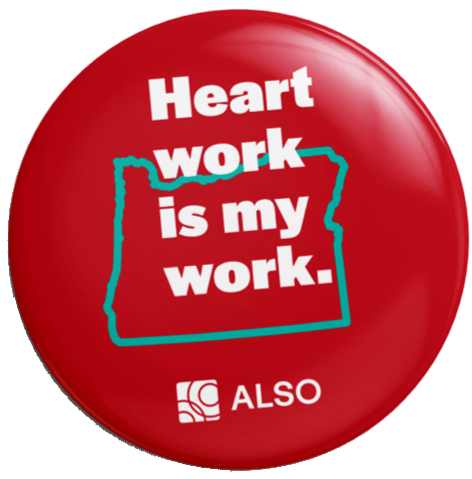
Sign up for our newsletter to get our latest news, content, and job opportunities.
Help us ensure that everyone has the same opportunities in their home, workplace and community. Let’s make dreams!
